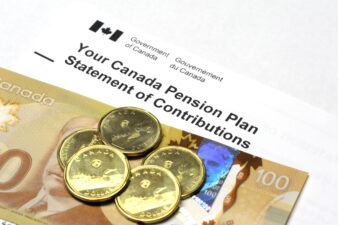People who have paid into the Canada Pension Plan (CPP) for years will receive monthly income for life. However, the benefit amount depends on contributions and the start of payments. The CPP pegs the standard retirement age at 65, which is also the reference point if users opt to collect early or late.
Many say starting payments at 60 is undesirable because of the financial consequences. The average monthly amount for a new pensioner retiring at age 65 today is $831.92 (as of January 2024). If the disincentive for the early take-up is a 0.6% per month reduction before age 65, the monthly pension decreases by 36% over five years.
The average CPP benefit at 60 is $532.43, substantially lower than the average. However, delaying the payment at age 70 results in a 42% permanent increase in five years. The monthly pension jumps to $1,181.33. However, despite the wide disparity in pension amounts, the early option offers many advantages, including more years to enjoy retirement.
Smart strategy
Not all who claim the CPP at 60 have health issues or urgent financial needs. Some use this strategy as they have investment assets like stocks and are still building a nest egg. Moreover, contributions to the CPP are mandatory if you work until 65 and voluntary if you will continue working up to 70.
Growing investments
The CPP is not a retirement plan, so expect a shortfall or gap compared to pre-retirement income. Investment income can fill the income gap over time through dividend reinvesting. The income streams from the CPP pension can cover daily expenses and other costs while the investment or capital is growing.
You don’t even have to sell your stocks when the market is down and allow for its recovery. However, the key is to stay invested in established dividend payers to ensure uninterrupted payments. Your investment should be safe with Enbridge (TSX:ENB) or Fortis (TSX:FTS).
Sector heavyweight
Enbridge is the top-of-mind choice in the energy sector. The $99.2 billion energy infrastructure company is a sector heavyweight with a 27-year dividend-growth streak. Due to the utility-like nature of the business, it boasts a low-risk commercial profile.
At $46.67 per share, the dividend offer is 7.84%. A $35,002.50 investment (750 shares) today will compound to $112,173 in 15 years, including dividend reinvestment. The overall money growth in this example is 220.47%. Enbridge should be able to sustain and raise dividends. Its four core franchises with enormous growth potentials provide predictable cash flows.
Dividend King
Fortis wears a crown because it’s a Dividend King, the second in Canada. The $25.8 billion regulated electric and gas utility company has increased dividends for 50 consecutive years. Its illustrious dividend growth and history should give confidence to invest in the utility stock.
If you invest today, the share price is $52.38, while the dividend yield is $4.51%. According to management, the $25 billion 2024-2028 capital plan will drive earnings, raise the rate base, and enable a 4-6% annual dividend increase through 2028.
Planning is essential
The timing of claiming the CPP is a contentious issue among future retirees. Still, whether you start payment early, late or at 65, planning is an essential component. Relying on the CPP alone is a financial risk in retirement.







